Posted by Thomas, from A Growing Tradition Blog.
A Harvest of winter carrots.
Eat local, organic, in-season foods - that's a mantra that may be difficult to follow year round, especially if you live in an area located within climate zones 1 through 7. Where I live, in zone 6 northern Massachusetts, our winters often prove long and frigid. Those wishing to buy organic locally grown produce in November will find that most of our farmers markets have closed for the season at the end of October. And the few farmers here who do choose to grow vegetables during the winter months may not always practice sustainable methods, since adding supplemental lighting and heat (which consumes significant amounts of fossil fuels) to a commercial greenhouse operation may be perceived as the only viable means to ensure a timely harvest. The alternative would be to buy organic produce at a supermarket. But in the dead of winter, this would not be considered local, in-season or sustainable.
My winter garden this year.
This reality begs the question - as someone who wishes to follow this "eat local, organic, in-season" mantra year round, am I limited for 6 months out of the year to what's stored in a root cellar, processed in a jar or bagged in a freezer? Or is it possible to add some fresh variety to my local diet during the lean months by starting a low-tech, low-energy consuming, organic winter garden, while at the same time lessening my family's dependence on produce that is shipped in from California and foreign countries? (Packaged organic salad mix, for instance, is one of the most energy-inefficient and costly veggies that one can buy at the supermarket.)
I will admit that I have a fascination with growing and harvesting food during the winter months beyond just the need to eat local, organic and in-season food all year round. For starters, I appreciate the fact that this practice has had a long and rich history, particularly in Europe, and the stubborn Luddite inside of me wishes to preserve this tradition. Ultimately though, for the die hard locavore (which I am not), it does not get any more "local" or "in-season" than growing your own winter crops. Nor do you have to rely on a governmental agency to tell you whether the carrot that you are consuming is organic. And finally, using low-tech winter gardening techniques ensures that your practices are sustainable.
Depending on where you live, your winter veggies may require an extra layer of protection during the coldest months. An inner layer of fabric row cover can help to increase the nighttime temperatures inside of your hoop houses by a few critical degrees.
I am a huge fan of farmer and guru Eliot Coleman, best known for his writings on winter gardening. His Four Season Farm in zone 5 Harborside, Maine specializes in growing food year round using only low-tech, non-heating (and in some cases, minimal-heating) elements. Coleman's technique relies upon, among other things, choosing the right varieties of winter crops, succession planting on specific fall dates, and a couple added layers of protection during the harsh winter months. The goal here is not to create an high-tech artificial environment in which to grow anything and everything, but to use low-tech and sustainable methods to give traditional winter crops the added protection they need to survive all winter long in zones 5, 6 and 7 and to extend the season by at least a couple more months in zone 4.
Hoop houses must be strong enough to withstand the heavy snow storms and winds of winter.
So grow a winter garden if you'd like to add some fresh variety to your local, organic and in-season diet during the cold months. Here are some tips on how to get started:
1. Read about Eliot Coleman's Winter gardening techniques. Coleman offers a great deal of information on which winter crops to grow, when to sow them and how to protect them from the elements. His book, "Four Season Harvest: Organic Vegetables for Your Home Garden All Year Long" is a great place to start.
2. You will need to offer your winter crops some form of protection from the elements. There are many hoop house designs available via the internet that practically anyone can build. Personally, I utilize mini hoop houses. You can read about how I built my mini hoop houses at here or go to http://www.agrowingtradition.com/2009/10/building-mini-hoop-houses.html.
3. Familiarize yourself with the hardiest of winter crops. Here are a few (some varieties are hardier than others): leeks, carrots, green onions, lettuces, bull's blood beet, a wide variety of Asian greens, spinach, radishes, chard, kale and wild greens like wild arugula, mache, claytonia and minutina. You will be surprised by the amount of fresh greens you can produce during the winter months.
4. Finally, just because none of your neighbors grow a winter garden doesn't mean it can't be done! Believe that it can be done and seek advice from local gardeners and bloggers who do! Practice makes perfect and soon, and eventually, your lean winter months will seem shorter and shorter.
A picture is worth a thousand words so here are photos of some of my zone 6 winter veggies:
Rows of winter lettuce.
A bed of winter carrots
There are several varieties of spinach that are very cold hardy.
Wild arugula is one wild green that thrives during the winter months.
A bed of kale, chard and lettuce.
Minutina adds an interesting look and texture to a winter salad.
A late fall sowing of mache.
A harvest of winter radishes.
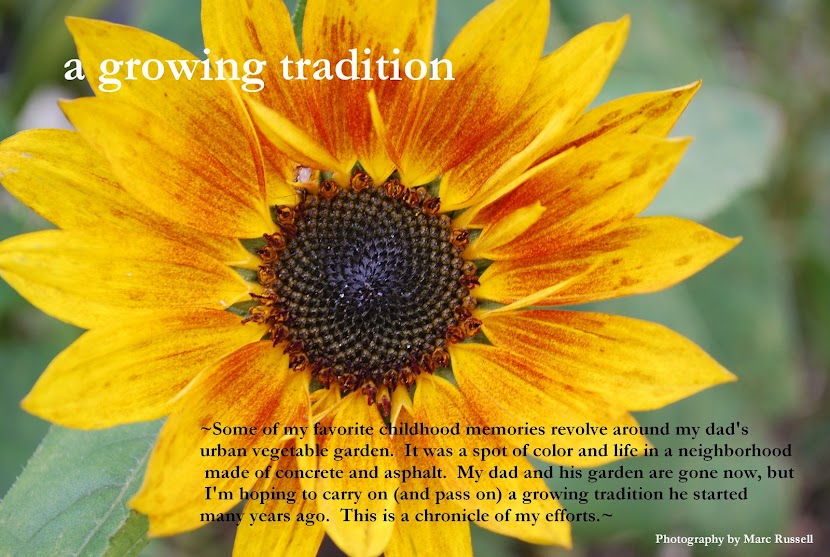
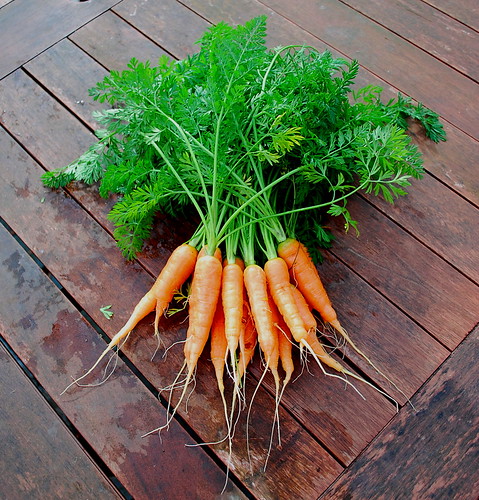
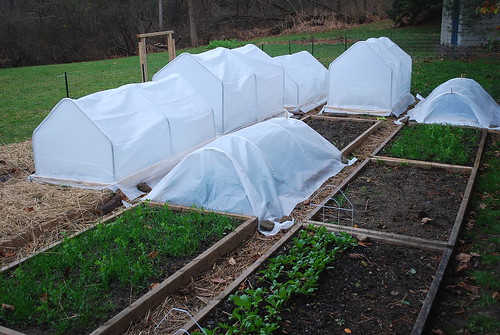

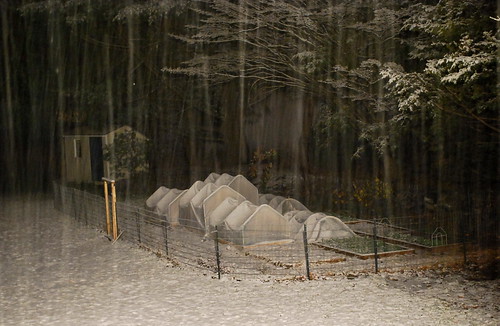
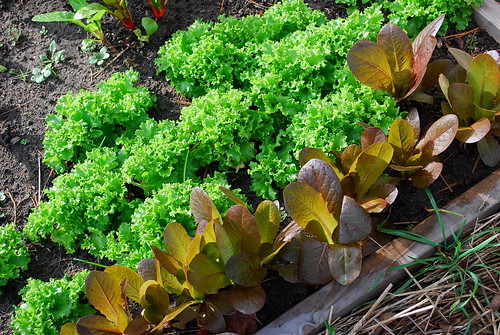
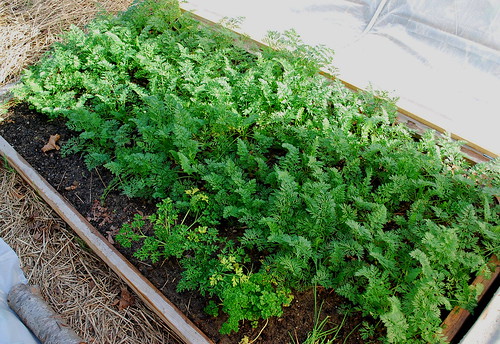
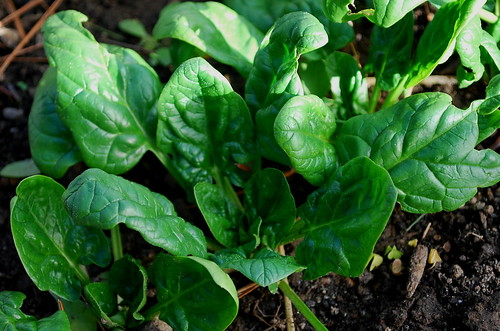
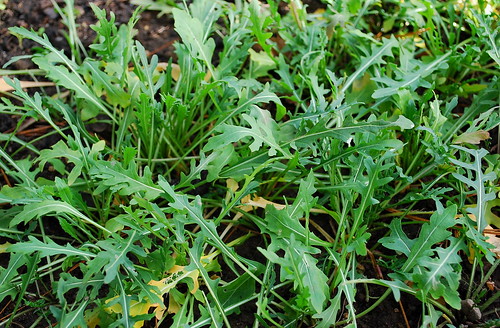
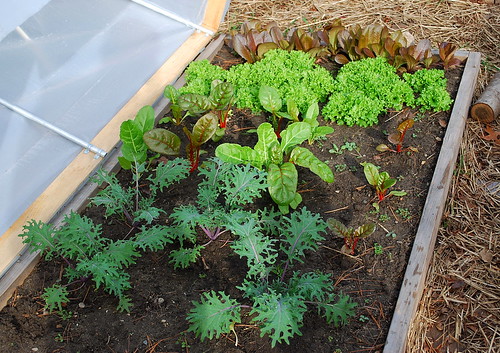
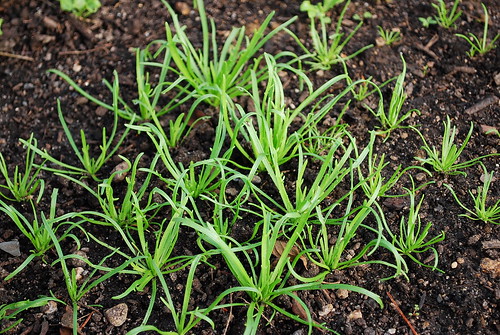
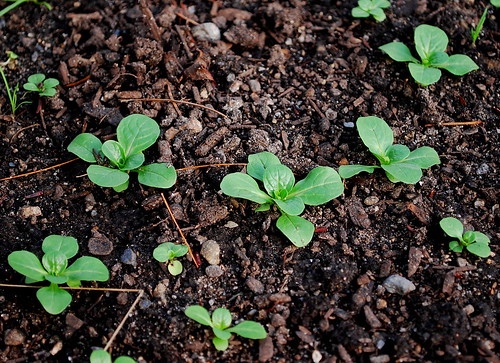
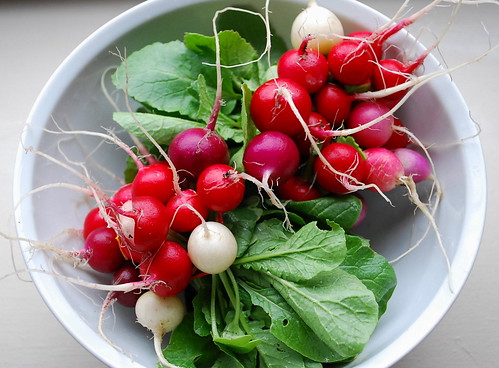





This is really inspiring reading...and so well written! I doubt if i'll actually carry through with the thought, but it occurs to me that i might have more luck with a winter garden than a summer garden...since the shade on the summer garden is from the trees, and in the winter all the leaves are gone. (However, i leave for work in the dark and get home in the dark...not amenable to good gardening!)
ReplyDelete